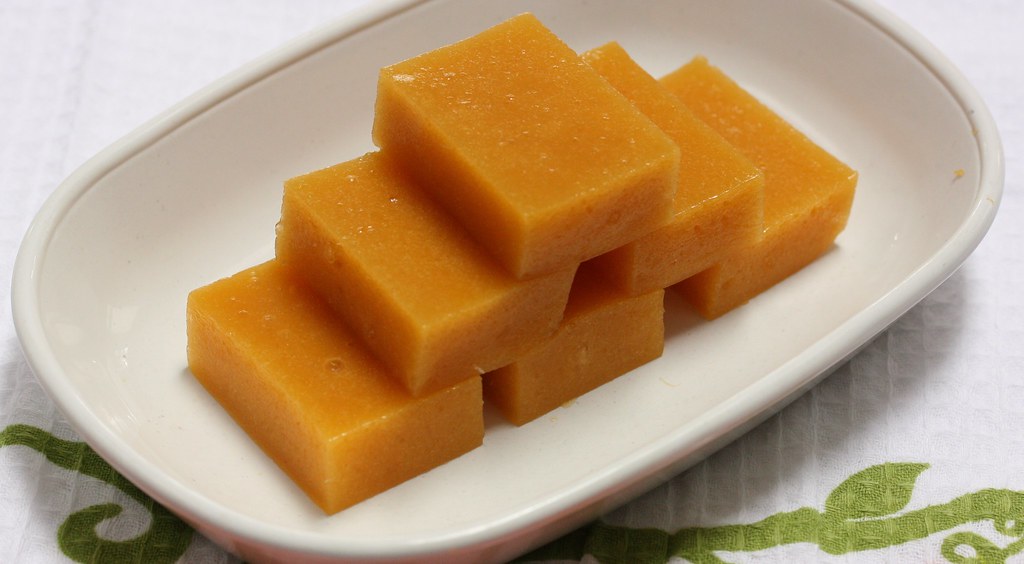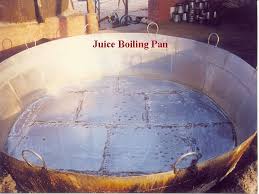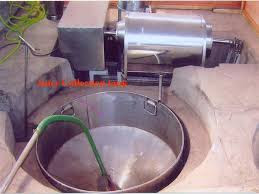Jaggery (Gur) Making Process from the Sugar Cane Juice
Jaggery Making Process
Sugarcane is used for the preparation of three sweetening products, viz., white sugar (refined sugar), Khandsari (raw sugar) and Gur/Shakkar (jaggery). Manufacture of all the three sweetening agents consists of extraction of juice from the cane and its clarification and concentration. Sugar and Khandsari is produced by the concentration of the juice by vacuum pan system in small to big industrial units Jaggery is produced by an open pan system. It is a sort of cottage industry. The farmers also produce Gur for their domestic use. Cane juice is also used for human consumption, particularly during summer, as a substitute for soft drinks. As compared to soft drinks, it is more nutritious and cheap. The shelf life of ready-to-serve cane juice can be increased to 4 months by a specific technique.
Composition of the Jaggery ;
Jaggery contains ;
sucrose = 65% , Glucose & Fructose = 5 – 15%, Protien=0.4%, Fat=0.1 Gms. , Minrals = 0.6 to 1Gms.along with it also contains traces of vitamins and amino acids.100 Gms. of jaggery provides 383 KCal of energy.
Health Benefits of Jaggery ;
- Improve digestive health.
- Has a role in anaemia prevention.
- Helps in liver Detoxification.
- Helps in Improving Immune function.
- It works as a Blood Purifier.
- Helps in Preventing respiratory problems.
- Relieves in Joint Pains.
- Helps in weight loss.
- Good source of Energy.
Making of Jaggery ;
The production process of jaggery involves three steps ;
1. Juice extraction from Sugarcane
2. Filteration and Boiling
3. Cooling and Packing
Extraction of Juice ;
Fresh cane of good quality is crushed in a power crusher comprising of a set of three horizontally or vertically placed rollers to extract juice in a tank. By a good crusher, the juice extracted is about 60% of the cane weight.
Filtration & Boiling ;
It can be done by adopting the following methods —-
A) Single Pan Arrangement;
In the single pan arrangement of jaggery making, operations of the boiling, clarification and concentration of juice are under in the same pan placed over a furnace specially designed the purpose. In each batch, about 100 litres of juice is processed at a time. But the volume of the juice to be handled in a single batch can vary and will depend upon the size of the pan and furnace. For clarification, extract of various plants (Sukhlai, Okra, Masak Dana, Phalsa etc.) or certain chemicals (limewater, sodium carbonate, sodium bicarbonate, citric acid. potassium metabisulphite etc.) are added when the juice starts boiling. The clarifier used coagulates colloidal non-sugars including nitrogenous substances, which are then skimmed off. The juice is boiled extensively to concentrate it to 60° brix. Addition of 1.3 g of sorbic acid to the semi-liquid hot Gur after removal from the furnace prevents deterioration of quality of Gur as it does not absorb moisture. The Gur is then transferred to circular wooden or earthen platform (“chak’), air-cooled and moulded into desired shapes and sizes. One batch yields about 10-15 kg of the product.
B) Tripple Pan Arrangement ;
Triple pan arrangement is also employed for making jaggery. The triple pan arrangement is superior to single pan because it allows better utilization of heat of the fuel. The filtered juice is received in the first pan closest to the chimney of the furnace and heated juice is then transferred to the second pan where it is boiled and clarified.
Addition of sodium bisulphite in the second pan @ 300 ppm would improve the colour of jaggery. It is concentrated to a Brix of 50° and then transferred to the third pan, which is located directly over the furnace to build-up Brix of 60° or more. The massecuite is then transferred to ‘chak’ and jaggery is made as in the single pan system. The output of one batch varies from 20-40 kg of jaggery.
FACTORS DETERMINING JAGGERY QUALITY ;
The skill of a person to prepare jaggery of good quality is very important. Besides the skill of the person, the following factors influence the quality of jaggery.
Varieties
There is a large variation in the quality of jaggery obtained from different varieties, which is not necessarily attributable alone to differences in sucrose in the varieties. These differences can be due to the claribility of juice as well. For good clarification, the varieties must have low level of colloidal matter, minerals and organic non-sugars such as harmful nitrogen, phenols, amino acids, starch, gums etc. and high level (300 ppm) of phosphate contents in juice. For Jaggery production, the state-wise recommended varieties are ———-
|
State |
Verities |
|
Andhra Pradesh |
Co 6907, CoT 8201, Co 8013, Co 62175, Co 7219, Co 8014, CoR 8001 |
|
Bihar |
CoS 767, BO 91, Co 1148 |
|
Gujrat |
CoC 671, Co 7527, Co 62175, Co 8014, Co 740 |
|
Haryana |
Co7717, Co 1148, Co 1158, CoS 767 |
|
Karnataka |
Co 7704, Co 62175, Co 8014, Co 8011, CoC 671, Co 86032 |
|
Madhya Pradesh |
Co 775, Co 7314, Co 6304, Co 62175 |
|
Maharashtra |
775, Co 7219, CoC 671, Co 740, Co 7257, Co 86032 |
|
Orissa |
Co 7704, Co 7219,Co 62175, Co 6304 |
|
Punjab |
CoJ 64, Co 1148, CoJ 81 |
|
Rajasthan |
997, Co 419 |
|
Tamil Nadu |
CoC 671, Co 62175, Co 7704,Co 6304, Co 8021, Co 86032, CoC 92061 |
|
Utter Pradesh |
CoS 687, CoJ 64, Co1148, CoS 767, CoS 802, CoS 7918, Co 1158, CoS 8408, CoS 8432,BO 91, CoS 8315, CoS 8016, CoS 8118, CoS 8119, BO 19, CoS 837 |
|
West Bengal |
CoJ 64, Co 1148 |
Fertilizer
Fertilizer application effects the jaggery quality greatly High dose as well as late application of nitrogen increase the organic non-sugars (colloids, gums, pectin and non-protein nitrogen) and decrease the phosphorus content of juice, which affects claribility of juice resulting in dark coloured jaggery. Total organic acids increase and pH of jaggery decreases due to high N application leading to poor keeping quality and poor colour of jaggery. Application of phosphorus to the crop improves the claribility of juice and also the quality of jaggery,
STORAGE OF JAGGERY
- The moisture content of jaggery plays an important role maintain its quality and sustain storage life. Higher the content of jaggery sooner is the deterioration of jaggery quality during its storage. Therefore, before storing the jaggery it should be well air-dried. The following points should be taken care of for the proper storage of jaggery.
- Store jaggery in godowns provided with moisture-absorbing agents like calcium chloride or quick lime. Use sugarcane trash, fly ash, paddy husk etc. in between layers of jaggery bags. Jaggery should be stored in gunny bags lined with black polythene sheets or in airtight tins or glass-ware.
- Store jaggery before setting in the monsoon at low temperature (4-9°C) of the storage room.






